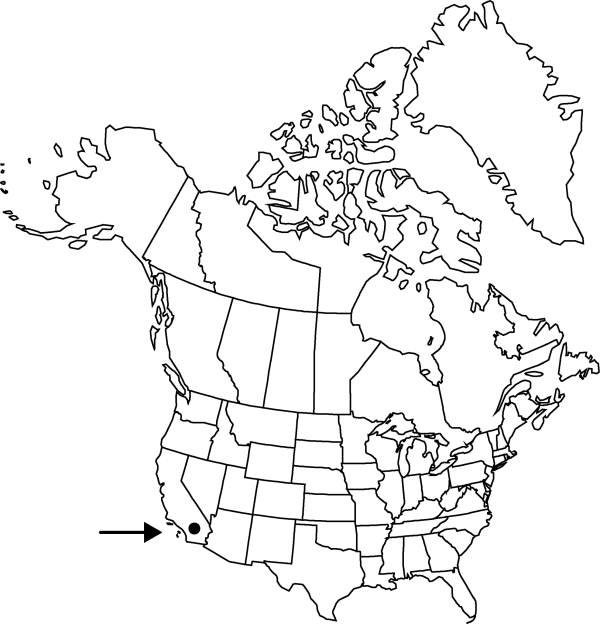familyChenopodiaceae
genusAtriplex
subgenusAtriplex subg. Obione
sectionAtriplex sect. Obione
subsectionAtriplex subsect. Pusillae
speciesAtriplex coronata
Difference between revisions of "Atriplex coronata var. notatior"
Fl. Calif. 1: 437. 1914.
Common names: San Jacinto Valley crownscale
Endemic
imported>Volume Importer |
imported>Volume Importer |
||
| Line 51: | Line 51: | ||
|publication year=1914 | |publication year=1914 | ||
|special status=Endemic | |special status=Endemic | ||
| − | |source xml=https:// | + | |source xml=https://bitbucket.org/aafc-mbb/fna-data-curation/src/2e0870ddd59836b60bcf96646a41e87ea5a5943a/coarse_grained_fna_xml/V4/V4_702.xml |
|genus=Atriplex | |genus=Atriplex | ||
|subgenus=Atriplex subg. Obione | |subgenus=Atriplex subg. Obione | ||
Latest revision as of 23:00, 5 November 2020
Stems ± erect. Fruiting bracteoles with body ± semicircular in profile, compressed or ± spheric, 4.5–5 × 3–5 mm wide; tubercles dense and usually with distinctive, radiating, equal marginal teeth.
Phenology: Flowering spring–fall.
Habitat: Alkaline flats, dry lake beds, with Suaeda, Atriplex spp., and other salt-tolerant species
Elevation: 400-500 m
Discussion
Atriplex coronata var. notatior is rather peculiar in that the staminate terminal spike is reduced to a single terminal hemispheric glomerule.
Selected References
None.
Lower Taxa
None.
